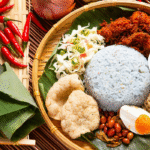The Evolution of Malaysia Language: Bahasa Malaysia
When we think of Malaysia, we often picture vibrant street food scenes, lush rainforests, and diverse ethnic communities living in harmony. But beyond the sights and flavors, there’s a powerful force that unites the country: the Malaysia language. Commonly referred to as Bahasa Malaysia, this language is more than just a means of communication—it is a symbol of national identity, pride, and unity. As the cornerstone of communication, the Malaysia language reflects both cultural richness and shared values
A Multicultural Nation Bound by a Common Tongue
Malaysia is a country celebrated for its rich cultural tapestry. From the Malays to the Chinese, Indians, and Indigenous groups, the diversity is evident in daily life. Yet, amid this mosaic, one element weaves everyone together: the national language of Malaysia.
Malaysia language such as Bahasa Malaysia, plays a critical role in bridging communities. While English, Mandarin, Tamil, and various dialects are widely spoken, Bahasa Malaysia stands as the glue that connects the nation.
Understanding the Bahasa Malaysia history and evolution gives us insight into how the language grew from regional roots into the official language of Malaysia. The Malaysia language plays an irreplaceable role in fostering national unity while celebrating diversity.
Frequently Asked Questions (FAQ)
1. What is the main language in Malaysia?
The main language in Malaysia is Bahasa Malaysia, also known as Malay. It’s the national and official language of Malaysia, used in schools, government, and media. While many Malaysians are multilingual, Bahasa Malaysia is the common language that brings everyone together.
2. Why does Malaysia have 3 languages?
Malaysia is a multicultural country with three major ethnic groups: Malays, Chinese, and Indians. That’s why you’ll commonly hear Bahasa Malaysia, Mandarin Chinese, and Tamil. These languages reflect the country’s diverse roots, and each one is supported in education, media, and daily life. This multilingualism is what makes Malaysia so unique!
3. What are the top 3 most popular languages?
The top 3 most widely spoken languages in Malaysia are:
Bahasa Malaysia – the official national language.
English – used in business, education, and as a second language by many.
Mandarin Chinese – commonly spoken within the Chinese Malaysian community.
These three languages are heard everywhere—from classrooms to coffee shops!
4. Who speaks Bahasa?
Everyone in Malaysia! Bahasa Malaysia is taught in all national schools and is used by people of all races and backgrounds. Whether you’re Malay, Chinese, Indian, or Indigenous, chances are you speak at least some Bahasa. It’s the linguistic bridge that helps Malaysians understand each other.
5. What is hello in Malay?
“Hello” in Malay is simply “Halo” (just like in English but with a local touch!). But if you want to sound more local, you can also say:
“Apa khabar?” (which means “How are you?”)
It’s a friendly way to start a conversation with a warm Malaysian vibe.
Origins: From Trade Language to Lingua Franca
The roots of the Malaysia language, known today as Bahasa Malaysia, run deep into Southeast Asia’s history, long before the concept of modern nations even existed. It wasn’t born in classrooms or carved into legislation—it evolved naturally, shaped by the region’s vibrant trade and cultural exchanges.
Centuries ago, the Malay Peninsula and surrounding islands were at the center of one of the world’s busiest maritime trade routes. Traders from Arabia, Persia, India, China, and the Indonesian archipelago frequently docked at port cities like Malacca, Kedah, and Johor, bringing with them spices, textiles, ceramics, and of course—languages.
Amid this bustling economic scene, a need emerged for a common tongue, something all traders could use to negotiate, barter, and build relationships. The Malaysia language quickly rose to fill this gap because of its simple sentence structure, adaptability, and phonetic pronunciation, making it easy to learn. The development of the Malaysia language during ancient trade was pivotal in shaping early interactions across the region.
This early form of Malay acted as a lingua franca—a bridge language that allowed people of vastly different cultures to communicate efficiently. As trade flourished, so did the language. It absorbed vocabulary from Sanskrit (due to Indian cultural influence), Arabic (thanks to the spread of Islam), Chinese dialects, and even Portuguese terms later on.
The Role of the Malacca Sultanate
The real turning point for Malay as a dominant regional language came during the Malacca Sultanate in the 15th century. Under the reign of Sultan Mansur Shah and his successors, Malacca became not just a thriving trading port but also a political and cultural center. The Malaysia language flourished as a tool of diplomacy and religion under the Malacca Sultanate’s reign.
The royal court adopted Classical Malay as the administrative language, using it in diplomacy, Islamic scholarship, and literature. The language was written in Jawi script, which is based on Arabic characters. Through Malacca’s influence, Malay spread across the region, from Sumatra to Borneo, and even into the southern Philippines.
The prestige of the Malay language grew significantly during this era, and it became deeply intertwined with Islamic teachings and local governance. For centuries after, Malaysia language was seen as a language of knowledge, power, and regional identity.
Colonial Impact and Language Shifts
Colonial powers greatly influenced the trajectory of the Malaysia language, but it remained resilient through change. As powerful as the Malacca Sultanate was, it eventually fell to foreign powers. Over the next few centuries, Malaysia came under the control of various colonial rulers, each of whom brought their own language and priorities. This period significantly disrupted the natural development of the Malaysia language and introduced new linguistic dynamics.
Portuguese and Dutch Periods
The Portuguese conquered Malacca in 1511, followed by the Dutch in 1641. While these European powers influenced architecture, religion, and trade, their linguistic impact was limited. The Portuguese introduced some loanwords (e.g., almari for cupboard and garfu for fork), which still exist in Bahasa Malaysia today. But they didn’t impose their language on the locals.
Malay continued to thrive in coastal trade networks and among local communities, especially as the language of the common people and Islamic scholars.
The British Era: English Takes the Stage
The British colonization, beginning in the late 18th century, had the most profound impact on language in Malaysia. The British brought with them the English language and a Western-style education system that favored English as the medium of instruction, especially in urban areas. Despite the emphasis on English, the Malaysia language continued to thrive in traditional and rural settings.
Schools were segregated by ethnicity and language:
- English-medium schools were often seen as elite, preparing students for civil service or business careers.
- Chinese and Tamil vernacular schools served their respective communities.
- Malay schools, primarily in rural areas, continued to teach in Malaysia language like Bahasa Melayu but were often under-resourced.
This created a linguistic hierarchy:
- English became the language of progress, power, and upward mobility.
- Malay remained rooted in tradition and the rural heartlands, as it considers Malaysia language and image of countries.
- Chinese and Tamil languages preserved cultural identity but were sidelined in national affairs.
Urban vs. Rural Divide
This period saw a clear urban-rural language divide. In cities like Kuala Lumpur, Penang, and Ipoh, English dominated public life. Meanwhile, Malay thrived in the kampungs (villages), where traditional life carried on.
This duality influenced social identity too. Those fluent in English were often seen as more “modern” or Westernized, while Malay speakers were associated with heritage and nationalism. This divide created tensions and set the stage for post-independence language reforms.
Seeds of Nationalism
Despite English dominance, the Malaysia language became a rallying point for local nationalists. Figures like Za’aba (Zainal Abidin Ahmad) began pushing for standardization and modernization of Malay through literature, education, and journalism.
As the independence movement gained momentum in the 1940s and 1950s, there was a growing realization: for Malaysia to stand as one united nation, it needed a common language rooted in its own soil—not inherited from colonizers. The Malaysia language became more than a tongue—it became a tool of empowerment and independence.
This ideological shift paved the way for Bahasa Malaysia to reclaim its place at the heart of the national identity once independence was achieved in 1957.
Post-Independence: The Rise of Bahasa Malaysia
With independence came the formal recognition of the Malaysia language as a national unifier. Everything changed in 1957, when Malaysia (then Malaya) gained independence. The founding fathers recognized that to build a cohesive national identity, they needed a shared language.
Bahasa Melayu, the native tongue of the Malays, was a natural choice. In 1967, it was officially renamed Bahasa Malaysia—a more inclusive term, signaling that it belonged to all Malaysians, not just ethnic Malays.
This marked the beginning of the Bahasa Malaysia history and evolution as we know it today. It was declared the official language of Malaysia, mandated for use in government, education, and national media.
The Philosophy Behind Bahasa Malaysia
The shift to Bahasa Malaysia was about more than language policy—it was a philosophical move. Leaders like Tunku Abdul Rahman and Tun Abdul Razak envisioned a nation bound not by race, but by shared values and culture. A common language would help achieve that.
Bahasa Malaysia was positioned not to replace other languages, but to act as a bridge. It became the heart of national schools and a unifying force across communities. Even as people retained their mother tongues, they learned and embraced Bahasa Malaysia.
This thoughtful linguistic planning laid the groundwork for national cohesion. While English continued to be taught and used—especially in business and higher education—Bahasa Malaysia gained ground as a core symbol of unity. Leaders emphasized that the Malaysia language should be inclusive, belonging to all citizens regardless of background.
Language in Practice: Daily Use and Formal Settings
Today, Malaysia language policies are embedded in every layer of society. In government, all official documents, parliamentary proceedings, and laws are in Bahasa Malaysia. Civil servants are expected to be fluent in it.
In education, national schools use Bahasa Malaysia as the medium of instruction, except for subjects like English, Mandarin, or Tamil. National exams like SPM and STPM also emphasize strong Bahasa Malaysia skills.
In media, major newspapers, TV channels, and radio stations operate in Bahasa Malaysia, reinforcing its presence in everyday life. From state announcements to entertainment shows, the language thrives. The Malaysia language is not only used in official government matters but also resonates in homes and communities.
Yet, the linguistic diversity in Malaysia means that many citizens switch between languages effortlessly. It’s common to hear someone speak Malay at school, Tamil at home, and English at work. This fluid multilingualism is one of Malaysia’s unique strengths.
Modern Influences and Evolution
Globalization has influenced the Malaysia language, blended modern expressions while retained traditional roots. Languages are never static. The Bahasa Malaysia history and evolution continues to unfold in the modern era. The digital age, globalization, and pop culture have all left their mark.
Today’s Bahasa Malaysia includes loanwords from English, Arabic, Tamil, and even Japanese. Teenagers sprinkle English slang into their Malay sentences, creating “Manglish” or “Bahasa Rojak.” Social media platforms, too, are shaping new forms of expression.
While purists sometimes worry about language purity, many linguists see this as natural growth. The ability of Bahasa Malaysia to evolve with time ensures its survival and relevance.
To accommodate modern needs, Malaysia’s Dewan Bahasa dan Pustaka (Institute of Language and Literature) actively updates vocabulary, regulates grammar, and publishes dictionaries. Their efforts preserve linguistic standards while allowing space for innovation.
The Heartbeat of National Identity
Calling Bahasa Malaysia the national language of Malaysia isn’t just a formality—it’s a declaration of cultural identity. It symbolizes the country’s commitment to unity, independence, and mutual respect.
From school pledges to the national anthem, from signage to public speeches, Bahasa Malaysia is everywhere. It’s the voice of the people, the government, and the nation.
Even for Malaysians abroad, hearing their native tongue evokes a deep sense of belonging. It’s more than grammar and vocabulary—it’s memory, culture, and home.
The Coexistence of Languages
One of the most fascinating aspects of Malaysia is its linguistic diversity. Besides Bahasa Malaysia, many Malaysians are fluent in English, which is still widely used in business and science. Mandarin is prevalent among the Chinese community, while Tamil is essential for many Indians.
In Sabah and Sarawak, Indigenous languages like Iban, Kadazan, and Bajau add to the rich linguistic landscape. The East Malaysian states are especially multilingual, reflecting centuries of cross-cultural interaction.
This coexistence is part of what makes Malaysia language dynamics. The government supports vernacular schools, offers multilingual public services, and promotes inclusive media. This approach honors heritage while promoting unity.
Challenges and the Road Ahead
Despite its achievements, the Malaysia language landscape faces challenges. There are debates over language proficiency, especially among youth, and concerns about declining standards in both Bahasa Malaysia and English.
Moreover, the global dominance of English, especially online, sometimes overshadows local languages. Efforts must be made to encourage the continued use of Bahasa Malaysia in tech, science, and academia to ensure it remains relevant.
However, there’s also immense potential. With more literature, digital content, and educational resources being produced in Bahasa Malaysia, the language is well-positioned for a vibrant future. Continued promotion of the Malaysia language in science, tech, and academia is vital for long-term relevance.
Cultural Expression Through Language
Language is a vessel for culture, and Bahasa Malaysia carries centuries of storytelling, poetry, and wisdom. Malay proverbs, known as “peribahasa,” are still widely used to convey life lessons. Traditional songs like “Rasa Sayang” echo cultural pride.
Modern artists, poets, and filmmakers continue to use Bahasa Malaysia to express local stories with global resonance. Whether it’s through film, music, or digital content, the language provides a voice for Malaysian creativity.
By nurturing this cultural expression, Malaysians ensure that their language remains not only relevant but revered. We believed Malaysia language can evolved to be a global language that are used in every settings.
Bahasa Malaysia in Global Context
As Malaysia gains visibility on the world stage, the role of Malaysia Language such as Bahasa Malaysia as a cultural export is also growing. From international diplomacy to Southeast Asian literature festivals, the official language of Malaysia is finding its space globally.
Efforts to promote Bahasa Malaysia abroad are increasing. Cultural centers, embassies, and language exchange programs now showcase it as part of Malaysia’s soft power. ASEAN countries, in particular, recognize the value of shared linguistic roots, and Malay is still understood in parts of Indonesia, Brunei, and southern Thailand.
Conclusion: Embracing the Past, Inspiring the Future
The journey of the Malaysia language from ancient trade routes to modern-day policy is a remarkable one. The Bahasa Malaysia history and evolution reflects the nation’s resilience, openness, and commitment to unity.
As the national language of Malaysia, it serves not only administrative functions but also binds the country together in spirit. While the linguistic diversity in Malaysia is vast, it’s Bahasa Malaysia that anchors the national identity.
Looking ahead, Malaysians have a role to play in preserving, promoting, and evolving their language. Whether through education, literature, or casual conversation, every word spoken in Bahasa Malaysia adds to its legacy.
Ultimately, the Malaysia language is more than communication—it is a cultural symbol that connects generations. Let us continue to celebrate this beautiful language—not just as the official language of Malaysia, but as the heartbeat of the nation.





